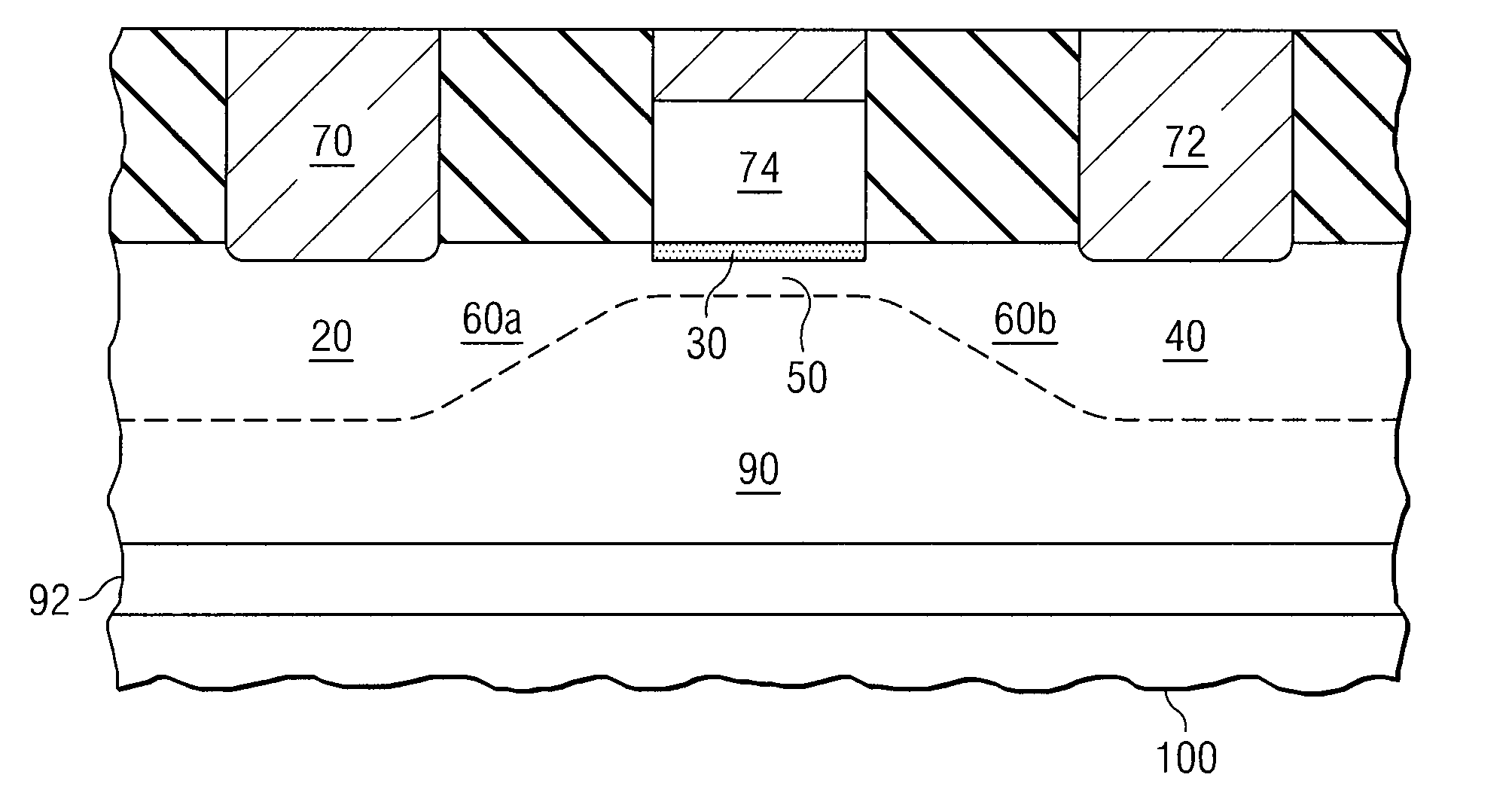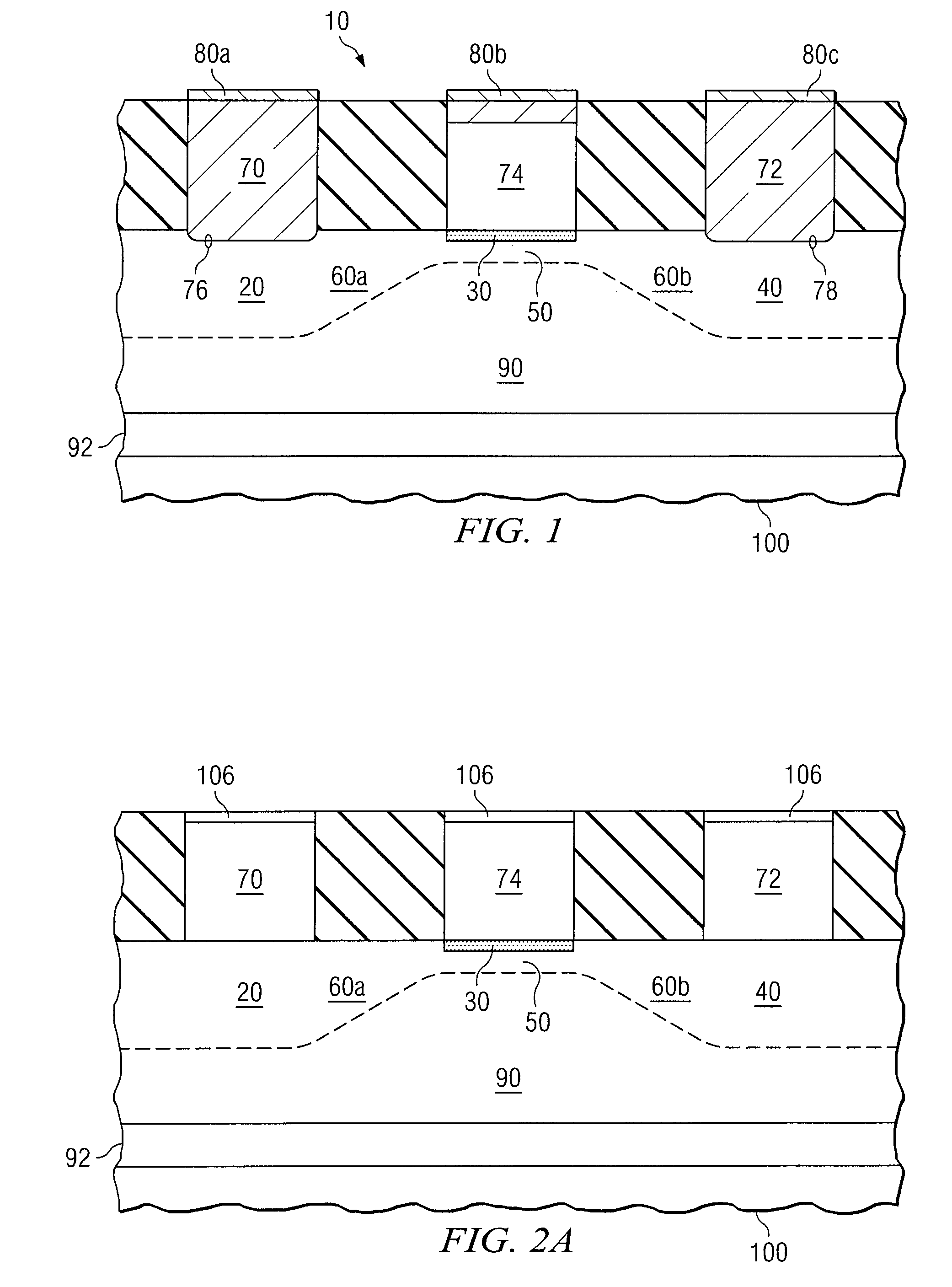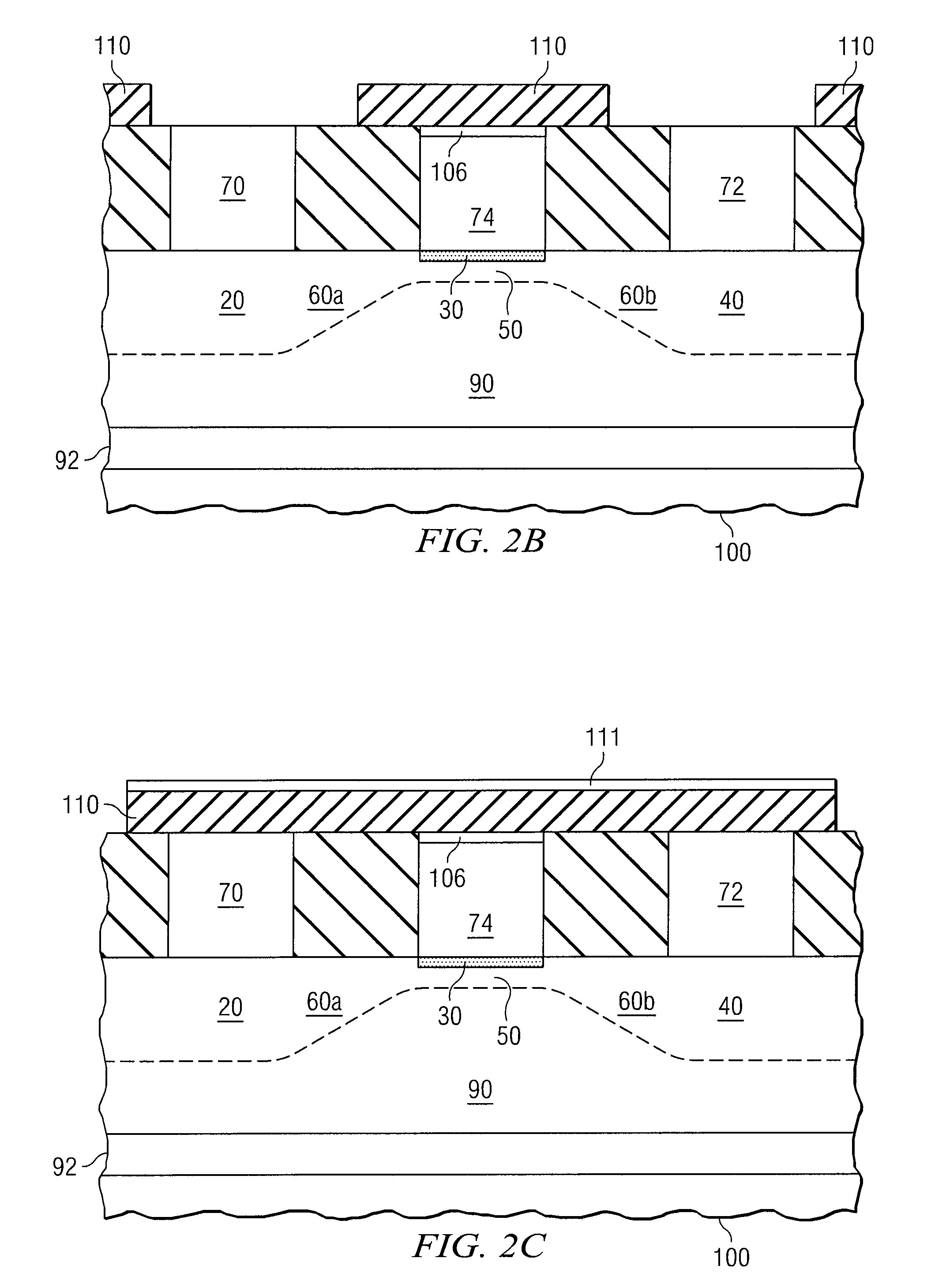Junction Field Effect Transistor Using Silicide Connection Regions and Method of Fabrication
a junction field effect and connection region technology, applied in the direction of transistors, semiconductor devices, electrical equipment, etc., can solve the problems of reducing the efficiency of transistors, and achieve the effect of reducing contact resistance and improving the operation of semiconductor devices
- Summary
- Abstract
- Description
- Claims
- Application Information
AI Technical Summary
Benefits of technology
Problems solved by technology
Method used
Image
Examples
Embodiment Construction
[0013]FIG. 1 illustrates a semiconductor device 10, according to certain embodiments. As shown in FIG. 1, device 10 may comprise a source region 20, a gate region 30, a drain region 40, a channel region 50, link regions 60a-b, silicide connection regions 70 and 72, polysilicon connection region 74, well region 90, and substrate 100. In some embodiments of device 10 using a Silicon-On-Insulator (SOI) architecture, device 10 further includes an insulating layer 92 between well region 90 and substrate 100. These regions are not necessarily drawn to scale. An interface 76 exists between silicide connection region 70 and source region 20. An interface 78 exists between silicide connection region 72 and drain region 40. In some embodiments, semiconductor device 10 is a junction field effect transistor (JFET). When appropriate voltages are applied to connection regions 70, 72, and 74 of semiconductor device 10, a current flows through channel region 50 between source region 20 and drain re...
PUM
 Login to View More
Login to View More Abstract
Description
Claims
Application Information
 Login to View More
Login to View More - R&D
- Intellectual Property
- Life Sciences
- Materials
- Tech Scout
- Unparalleled Data Quality
- Higher Quality Content
- 60% Fewer Hallucinations
Browse by: Latest US Patents, China's latest patents, Technical Efficacy Thesaurus, Application Domain, Technology Topic, Popular Technical Reports.
© 2025 PatSnap. All rights reserved.Legal|Privacy policy|Modern Slavery Act Transparency Statement|Sitemap|About US| Contact US: help@patsnap.com



